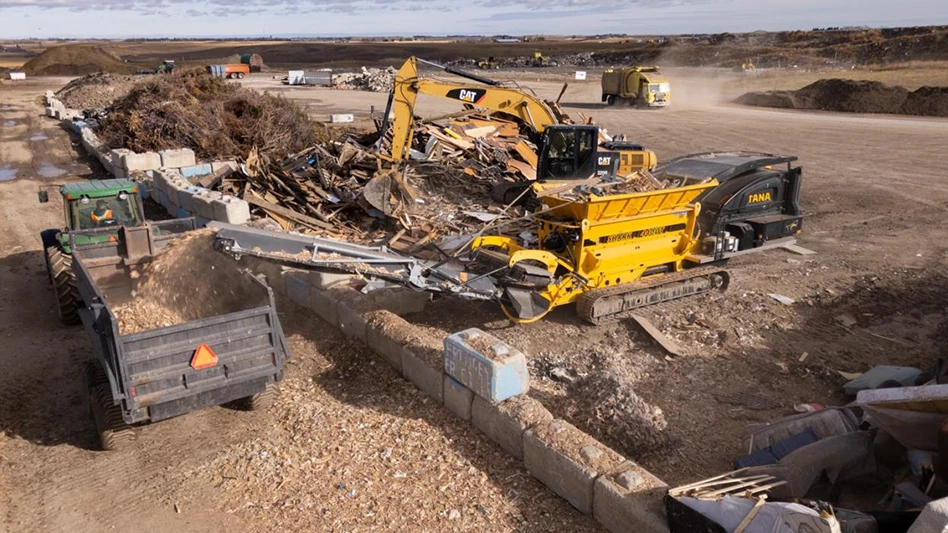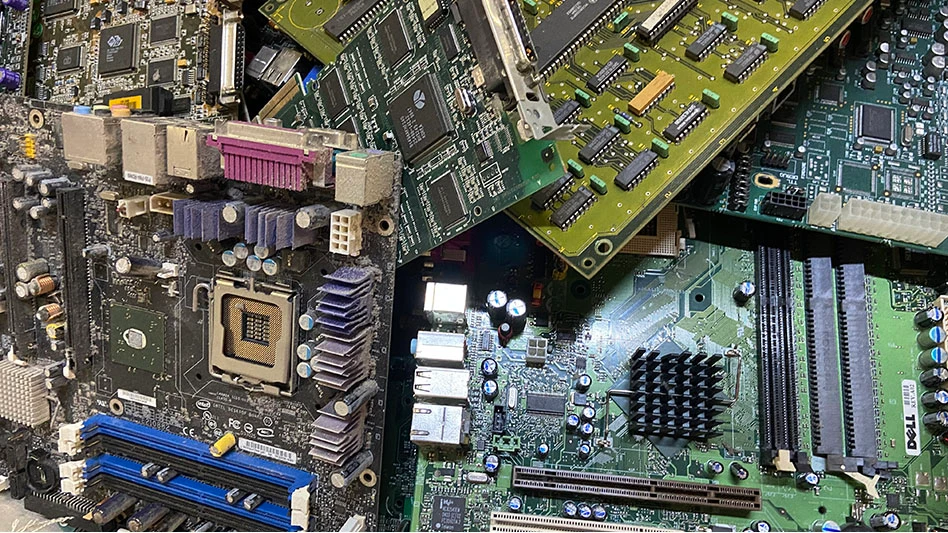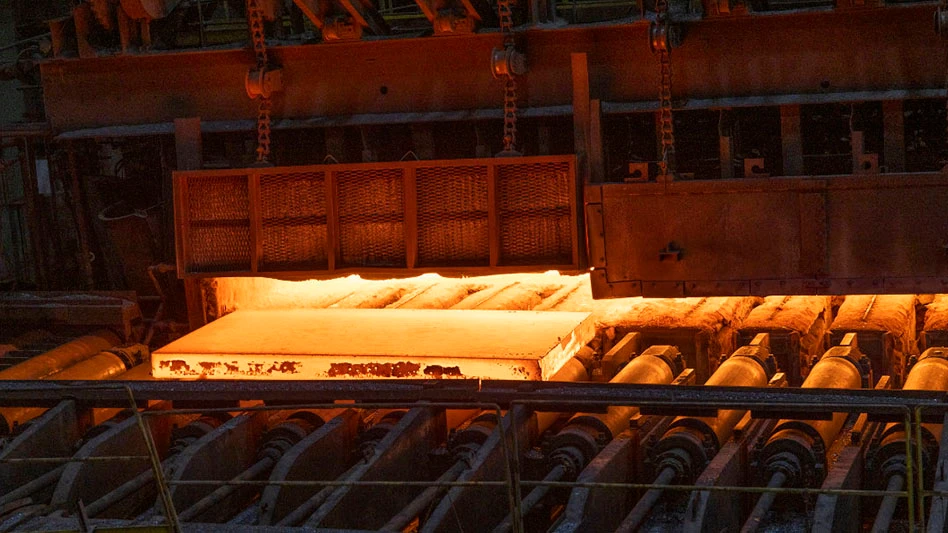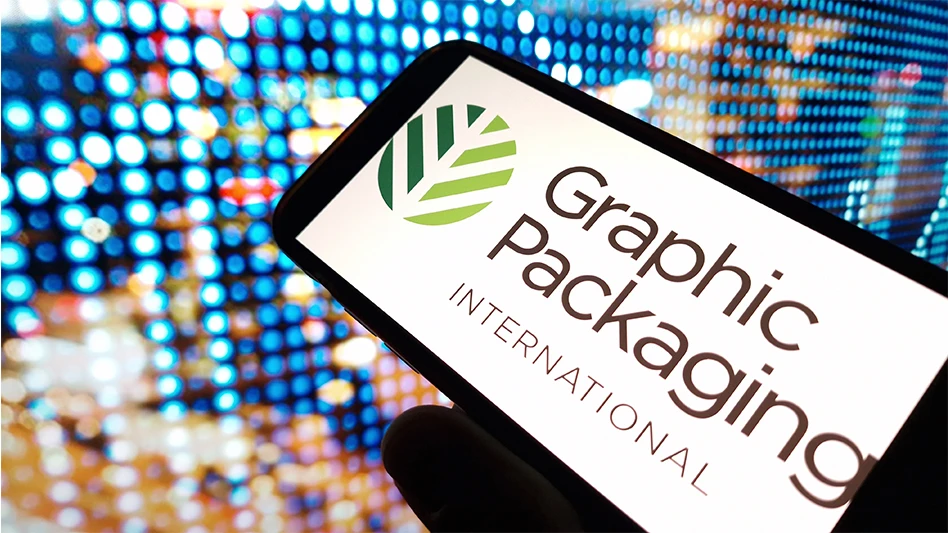Seattle, the city that set the standard nationwide on garbage recycling, might be on the verge of admitting it can't meet its recycling goals.
The city's 1998 solid-waste plan called for recycling 60 percent of the city's waste by 2008.
But the public utilities department won't say whether the city is still committed to that goal or timetable.
A decision on "how far can we go how fast" hasn't been nailed down yet, said Tim Croll, community services director for Seattle Public Utilities.
The department expects to make a recommendation to the City Council before the end of the month.
"We're at halftime in the recycling football game," Croll said. "We're on the verge of coming out of the locker room with our game plan for the second half."
Other than injured civic pride and disappointed environmental aspirations, there are no particular consequences to not meeting the goal. But adhering to the timetable affects garbage rates, which is why decisions must be made.
Margaret Pageler, chairwoman of the council committee in charge of recycling, says of the 60 percent goal, first adopted in 1988: "That was arbitrary, and I don't know whether it's realistic. I think we do need to be thinking about how we can make the most environmentally favorable result for the money that we spend. And it may, in fact, be waste reduction rather than recycling."
The latest recycling figure the public utilities department will give is for 2000, during which the city recycled 40 percent of its waste, said Jennifer Bagby, who keeps the recycling statistics. That's lower than in previous years, but still among the best in the nation.
The city's single-family households recycle close to 60 percent of their waste, but apartments and businesses somewhat less, Croll said. Those who haul their own garbage to transfer stations also have low recycling rates, he said.
At least one environmental leader said he hopes the city sticks to its ideals.
"I would be very disappointed if the city backtracked on its commitment to the 60 percent goal," said Alan Durning, executive director of Northwest Environmental Watch, an environmental research center. "It's a hard goal to get to, but Seattle's leadership has been important for setting the agenda for recycling all across the U.S."
Budget times are tough and Durning said he could understand "if we slowed it down a little bit," but he doesn't want to see the goal abandoned.
Pageler said the choices are indeed getting tougher than they used to be.
"Cost-effectiveness is always an issue," she said. "We are doing so well in meeting our recycling goals on the residential side that if we went the next step - food recycling - the cost could be quite high."
That's because setting up food-waste collection might require yet another truck trip to homes. Already, Seattle's homes are visited separately by garbage haulers, recycling trucks and yard-waste trucks.
Recycling often doesn't pay for itself, and the subsidy is provided by higher garbage rates.
However, it's possible that the city could make big, yet affordable, recycling gains on the commercial side by developing a program to get businesses to recycle more paper, Pageler said.
The city took over regulatory responsibility from the state for commercial haulers about two years ago.
"That's the sector where the opportunities for recycling are very high," Pageler said. "That's where our focus is going to be the next couple of years."
Rates of recycling in the commercial sector seem to wax and wane according to prices paid for recycled paper, Croll said. Prices were high in the mid-'90s but have declined since then.
Keeping recycling rates high in the residential sector requires ongoing education, because new people move into the city's homes and need to be told how to recycle and prodded to do it, Pageler said.
Keeping the commitment high is slightly tougher, because in the past couple of years, some think tanks have criticized recycling programs as a questionable fad in which too much money is spent for too little environmental good.
Last summer, in a cost-cutting move, New York City stopped recycling glass and plastic.
But Durning, the public utilities department and other environmental groups still strongly defend recycling.
"Recycling is a heck of a lot better than landfilling," Durning said, "partly because landfills inevitably leak and even more because of the energy and materials that we conserve when we recycle."
But both Durning and Pageler said reducing the amount of waste generated in the first place and finding ways to reuse things are higher virtues than recycling. And once recycling's low-hanging fruit is picked, the picking becomes more complicated and expensive, making waste reduction an attractive alternative, Pageler said.
"Are there ways that we could put the same kind of subsidy into waste reduction and maybe have a better result?" Pageler asked rhetorically. "It's something I've asked about."
Meanwhile, Durning urges the city to stay true to its cutting- edge ways. "The city has innovated again and again in recycling," he said.
"Charging by the size of your garbage can was a huge innovation when it was introduced in 1988," he said. Other innovations have included introducing curbside recycling, the master composter program, and educating citizens on how to reduce the junk mail coming to their homes.
Another creative and successful program, Durning said, has been seeding stores that buy and sell construction waste such as mantelpieces, plumbing fixtures or lumber taken from demolished buildings.
The city has been experimenting with a food waste collection program. No other large city has done this, Durning said.
Croll said the pilot has involved two options: One is giving customers a can just for food waste and having it picked up separately. The other is a can that combines food and yard waste. Compostable paper, which includes such things as pizza boxes, Kleenexes or paper towels, is also being studied.
And last summer, in a program called "Reuse it Seattle," the department set up free flea markets at six or eight locations and times, encouraging people to bring stuff that they wanted to get rid of that other people could take for free.
"Those have been quite successful, with only a small percentage ending up in the Dumpster," Croll said.
The department is thinking about how to expand the program using the Web.
There also is interest in "product stewardship," an approach that has perhaps been carried furthest in Germany. Companies take responsibility for the "end life" of their products, providing for them to be reused or returned to the company. Croll says the department is part of a regional product stewardship council, which is targeting computers and focusing on trying to reduce the mercury in products.
The department's innovation comes from a departmental philosophy that questions everything in the garbage, Croll said.
"Anything that's in the garbage, you should be looking at and saying, `Why is this here, what use can we make of it, and are we sure we need it in the first place?' We take nothing for granted," he said. Seattle Post Intelligencer
Latest from Recycling Today
- Plastics market turbulence could continue in new year
- EGA Spectro Alloys donates to 30 nonprofits, charitable initiatives
- Signature Systems earns ISO certification
- Poll claims companies worried about future packaging materials shortages
- US EAF mills are running strong: Navigate Commodities
- Survey claims majority of Americans support DRS
- The ESG time trap: How companies fall behind before they ever begin
- Commentary | Recycling: An equation of supply and demand





